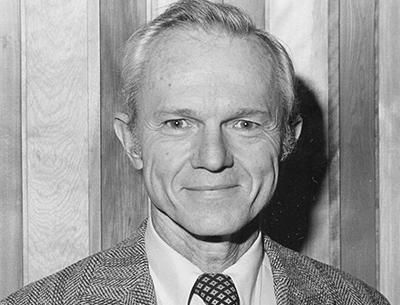Julian Eisenstein

Julian Calvert Eisenstein, a professor of physics, died at home in Washington, D.C., on April 27 at the age of 95. His family said he had been ill for about 10 days with a duodenal ulcer.
Dr. Eisenstein and his wife, Elizabeth L. Eisenstein, who died on Jan. 31, had a house on Georgica Road in East Hampton since the 1950s. In their younger years, they were friends with many artists in the East End community, collecting Abstract Expressionist work and supporting the arts through Guild Hall.
He was born on April 3, 1921, in Warrenton, Mo., to Otto Eisenstein, a pharmacist, businessman, and banker, and the former Nell Calvert. He grew up in Warrenton, a small town about 60 miles west of St. Louis.
As a high school student, he happened to see a poster about a written scholarship examination offered by Harvard and decided to participate. He won a scholarship and began college at the age of 16. Mr. Eisenstein graduated Phi Beta Kappa in 1941, and stayed on in Cambridge, Mass., for another seven years to conduct war-related research in acoustics and then earn a Ph.D. in physics in 1948. While at Harvard, he was awarded a Sheldon Travelling Fellowship and a fellowship in physics. He also met a fellow Harvard graduate student, Elizabeth Lewisohn, who became a noted historian. They were married on May 30, 1948.
After earning his doctorate, he became an instructor at the University of Wisconsin. The couple lived in Madison until 1952. A position as a national research fellow at the Clarendon Laboratory at Oxford University took Mr. Eisenstein and his wife to England for a year.
In 1953, he moved on to Pennsylvania State University, where he worked as an assistant and associate professor. He became a physicist with the National Bureau of Standards in Washington, D.C., in 1958. When the bureau moved to Gaithersburg, Md., in 1966, he took a position as a professor of physics at George Washington University. He was chairman of the physics department from 1969 to 1974.
In addition to his teaching and administrative duties, he published or co-authored more than 40 scientific papers on acoustics, low-temperature physics, superconductivity, and the Mossbauer effect. He retired in 1986.
Starting in 1955, he began to spend his summers in East Hampton with his family. He met local artists and developed a lifelong love for modern art, frequently attending art openings at Guild Hall in East Hampton and Ashawagh Hall in Springs.
He became a founding member of the Washington Gallery of Modern Art, and served on its board of trustees from 1961 to 1966. Before it closed in 1968, the gallery brought many innovative exhibitions to Washington, including one on Van Gogh and a landmark exhibition by members of what became known as the Washington Color School.
While he started out as an art appreciator and collector, he ended up trying his hand at painting. He took life drawing and painting classes, some at the Art Barge in Amagansett.
He wrote his memoirs in several unpublished volumes. Regarding his love of the visual arts, his daughter, Margaret Eisenstein DeLacy remembered him writing this: “I started by looking and I learned to see.”
He had a wonderful sense of humor, loved wordplay, puns, and anagrams, and was known to tackle the London Times crossword puzzle, his daughter said.
He also enjoyed playing tennis with a group of friends and with his wife, who became a nationally ranked senior women’s tennis player and champion.
He was a family man and his later years were clouded by the sudden death of his son John Calvert Eisenstein from a cerebral hemorrhage in 1974.
Dr. Eisenstein is survived by two of his children, Margaret Eisenstein DeLacy of Portland, Ore., and a son, Edward Lewisohn Eisenstein of Fayette, Mo. Another son died at birth in 1949. Three grandchildren and two great-grandchildren also survive.
A service will be held at the Cosmos Club in Washington, D.C., on Aug. 27 from 4 to 7 p.m.
Donations have been suggested to the Harvard University Faculty of Arts and Sciences, the John Eisenstein Scholarship Fund, or the Harvard College Fund, at Massachusetts Hall, Cambridge, Mass. 02138.
